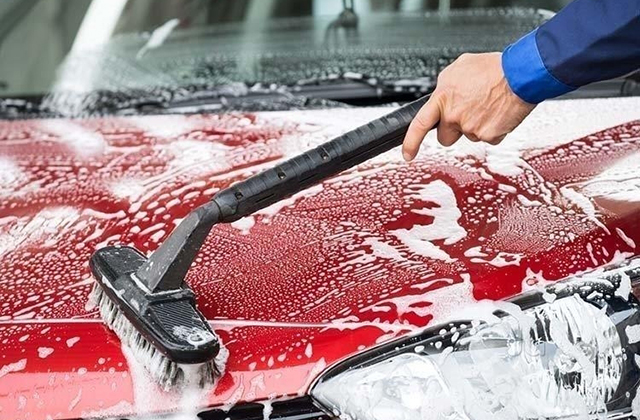It’s a well-known fact that cleaning and detailing your car’s engine compartment will increase its resale value. Most car experts believe that people who take the time and effort to clean and maintain the engine compartment take better care of their vehicle. Auto mechanics also understand that a tidy engine belongs to someone who cares for their motor vehicle, and they are more likely to perform their services with care. Follow our ultimate list of muscle car detailing products Australia and tips from the professionals.
Many car enthusiasts find that detailing their car’s motor is just the beginning of a long road toward vehicle perfection. Other embellishments include polishing aluminum parts, painting key parts with bright colors, and adding chrome. Whatever you choose, make it your style, and have fun.
Engine cleaning — like other car detailing tasks — is nothing more than scrubbing to remove dirt, oil and grease and applying protection to restore the beauty and prevent corrosion and deterioration. It’s an easy process that will take you about 45 minutes to an hour twice a year.
There are four basic steps to the process:
- Remove loose debris
- Protect electrical components
- Degrease and clean
- Protect and beautify
Remove Loose Debris
The first step is to remove the excess debris that gets trapped in the nooks and crannies, including the hood, grille and vents. If you live in an area with four seasons, you’re already familiar with the tree leaf debris problem. If you have compressed air available, an air nozzle is an easy way to remove old leaves. If you don’t, a soft hand brush will suffice.
To loosen the grease accumulated on your engine and the engine compartment, start your engine and allow it to warm for two to three minutes. The best temperature for cleaning your engine is warm to the touch, but not hot.
Protect Electrical Components
Next, prepare your engine for getting wet. Cover all sensors, the distributor, spark plug openings and any electrical devices that have the potential for water accumulation. Use plastic baggies or plastic wrap to cover these items. Use tape or rubber bands to hold the plastic in place. You’re only trying to prevent the majority of the water from getting in; it does not need to be watertight. The engine environment should already be waterproof.
Degrease and Clean
After warming the engine and protecting sensitive areas, you’re ready to apply your engine degreaser. Although they are quick and easy, I warn people against the use of harsh petroleum-based cleaners in the engine compartment. They quickly cut through grease and grime, but they also deteriorate your rubber and vinyl components.
When applying your engine degreaser to detail your engine, it’s best to start from the lower areas and work your way up. This prevents the degreaser from dripping on you as you clean the underside areas. One important thing to remember: the engine degreaser will remove the wax from the painted surfaces of your car. If you get degreaser over-spray on your fenders, plan on re-waxing these areas.
Allow the cleaner to soak on the engine for three to five minutes, but do not allow it to dry. For light to mild levels of grease, you will not need to use a brush on the engine and other surfaces. For heavy soil, you can use a long-handled brush (parts brush) and car wash solution to provide additional cleaning action prior to hosing off the degreaser.
When you are ready to remove the degreaser, hose down the entire engine compartment and surrounding surfaces with plenty of water. If you’re using a high-pressure nozzle, be careful that you don’t get the nozzle too close to the covered electrical connectors. Allow your engine to air dry for several minutes before using a towel to wipe down all accessible parts. Remove the plastic bags. The heat from the engine will assist in the drying process; however, do not allow the engine to air dry, as this will result in water spots. When dry, start your engine and allow it to run for a few minutes.
Protect and Beautify
When your engine compartment is cool and dry you should apply a coating of engine protectant. If you don’t have an engine protectant, use your favorite rubber and vinyl protectant. Apply a liberal coating to your hoses, wires and plastic shields. To add a quick shine and protection to the painted surfaces in the engine compartment, use a detailing spray and wipe off the excess with a clean towel.
Guide to Detailing offers hundreds of articles and blog posts related to car detailing and car care. Visit now!
Article Source: http://EzineArticles.com/expert/David_Bynon/26388
Article Source: http://EzineArticles.com/6122802


